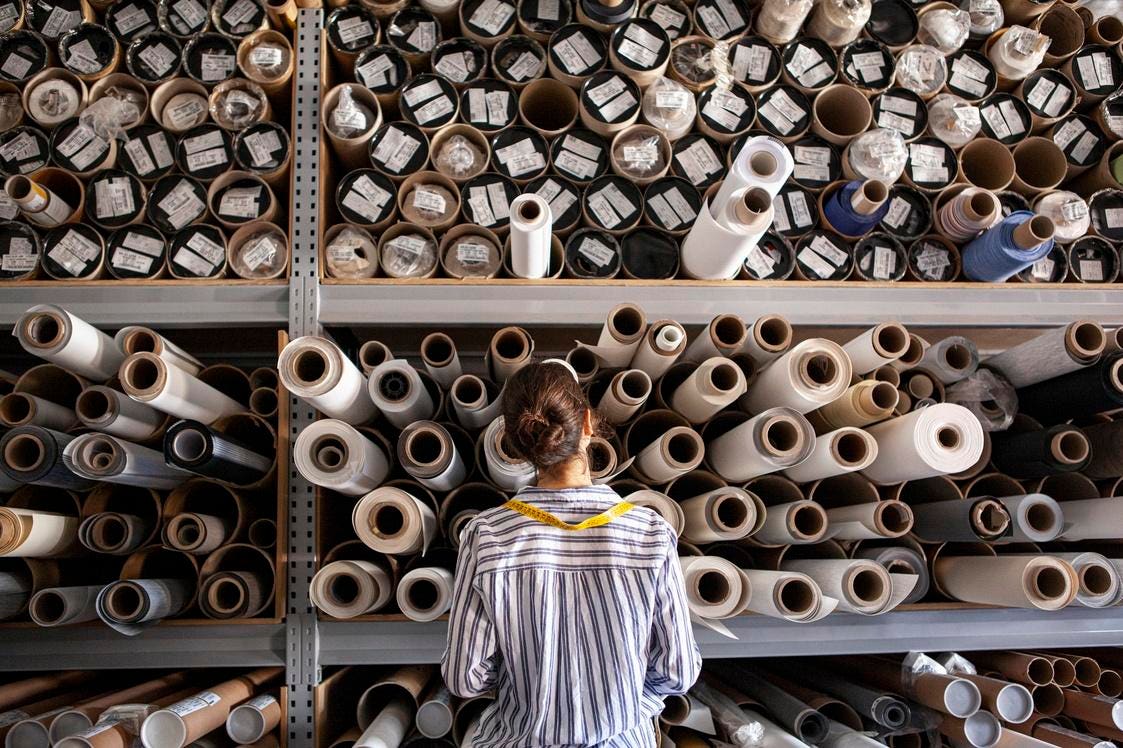Pre-loved, vintage, second hand, thrift. Call it what you will, the apparel industry has been making a big noise about its efforts to reuse, recycle and reduce.
But according to results from sustainability charity WRAP today, insatiable consumer demand means that far from a reduction, never-ending demand for new apparel is overwhelming the impact of the growth in pre-loved fashion.
The volume of products signatories sold or placed on the market was 626,000 tons of textiles in 2022, a 13% increase on 2019 baseline levels. This equates to over 17.5 lbs of new clothing per person in Britain, or 28 new items.
The clearly exasperated U.K.-based resources charity WRAP issued its latest update on its Textiles 2030 initiative today and warned that a 13% rise in the production of new apparel between 2019 and 2022 had “cancelled out” progress to reduce the carbon impact of textiles.
While the industry has nudged the dial forward, real progress looks as far away as ever.
Although Textiles 2030 is a U.K. voluntary agreement, many of the names signed up are international players.
Launched by WRAP in 2021 to help the fashion industry to collaborate on reductions in carbon and water use, plus set circular textile targets, currently it has 38 brands and retailers signed up among 130 businesses overall, representing an estimated 62% of the textiles placed on the U.K. market, according to the organization.
Big-name signatories include online fashion giant Asos, grocery group Asda (which has its own fashion line), eBay, Primark, and Dunelm.
The agreement has set out targets for a 50% carbon reduction and a 30% decrease in water use by 2030, notably cotton fiber production which accounts for 84% of the total fashion water footprint.
Fashion Water Use Up
The progress report showed that for each ton of apparel produced, compared with a 2019 baseline, carbon emissions had fallen by 12% and water use by 4%. However, a 13% increase in production meant that total carbon emissions have only fallen by 2% over three years, while water use has actually increased by 8%.
The report outlined that while 71% of cotton used by signatories now comes from improved sources, production levels have eroded some of the positive movement.
It also highlighted the potential for greater savings by designing for longer product life and increasing the use of recycled fibers, which it estimates could reduce the total carbon footprint by 12% and water use by 18%.
Despite the per-ton reduction in water use in 2022, an overall production increase since 2019 has not only cancelled this out but lead to an 8% rise in water use, equivalent to neraly 110 billion cubic feet — or in other words enough to provide 87% of the U.K. population with water for all wants and needs, every day for a year.
The rise in production also impacts the actual reduction in carbon, which has been reduced to just 2%.
Pre-loved Continues To Lag
“Textiles and fashion are responsible for up to 10% of global carbon emissions. But as fast as positive improvements happen, they’re cancelled out by rising production. If we hope to get anywhere near achieving the critical goals of the Paris Agreement, we must get serious about textiles,” Catherine David, director of behavior change and business programs, at WRAP said.
“We need sustainable design, sustainable business models, and more sustainable ways of buying and using clothes from more businesses. But production is clearly the key issue, and the onus is on businesses to make preloved part of their portfolio, so it’s accessible, easy and fun.”
With more brands and retailers operating take-back schemes, the volume of used textiles collected and sold for reuse or recycling between 2019 and 2022 had doubled, WRAP said.
However, production of new apparel far overshadows the pre-loved market, and a gulf remains between new products and pre-loved items sold, with the second-hand market making up just 9% of textiles placed on the market, according to WRAP.
Read the full article here





